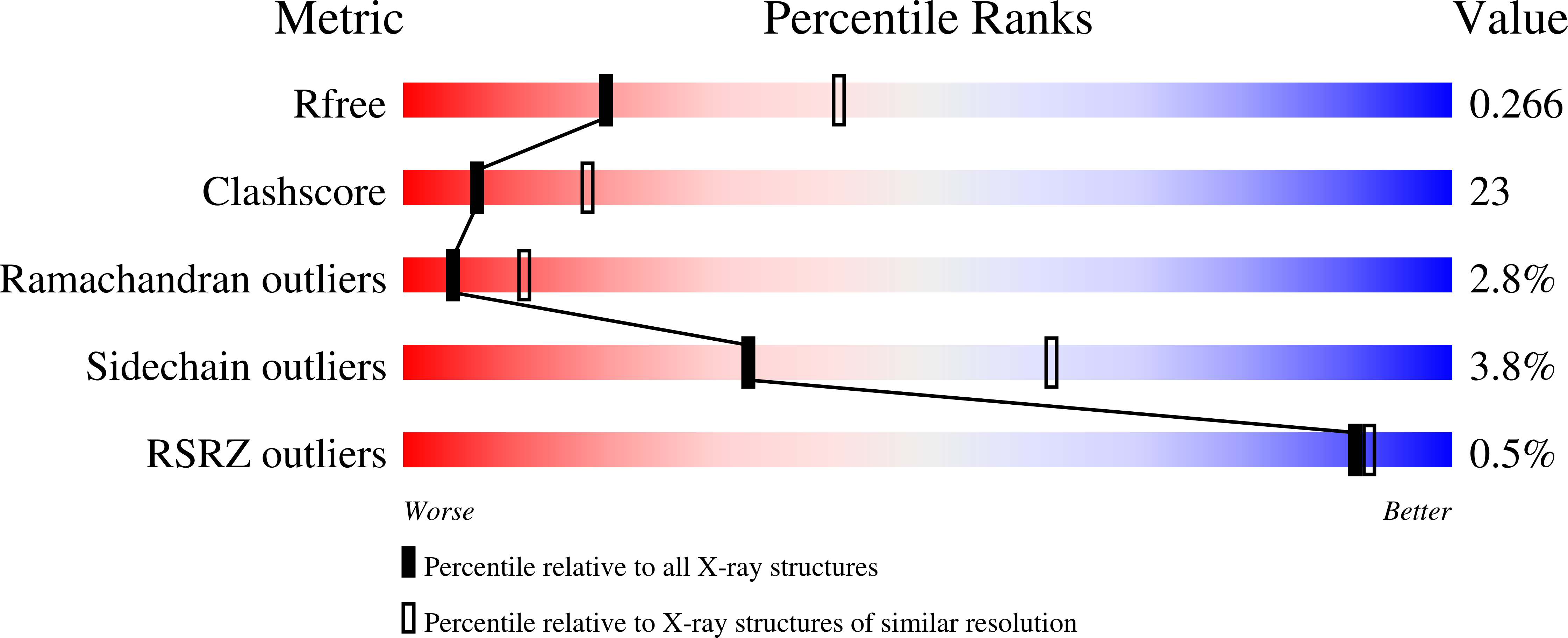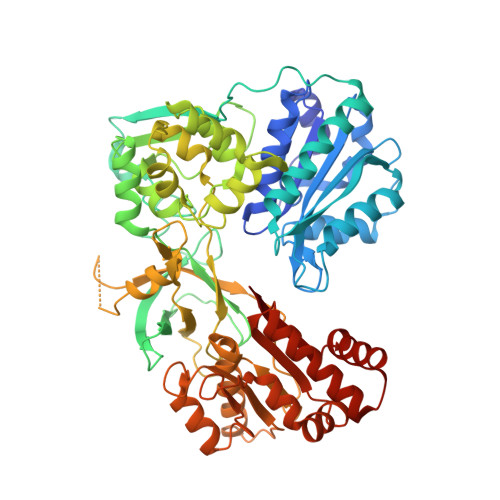NADPH-cytochrome P450 oxidoreductase. Structural basis for hydride and electron transfer.
Hubbard, P.A., Shen, A.L., Paschke, R., Kasper, C.B., Kim, J.J.(2001) J Biol Chem 276: 29163-29170
- PubMed: 11371558
- DOI: https://doi.org/10.1074/jbc.M101731200
- Primary Citation of Related Structures:
1J9Z, 1JA0, 1JA1 - PubMed Abstract:
NADPH-cytochrome P450 oxidoreductase catalyzes transfer of electrons from NADPH, via two flavin cofactors, to various cytochrome P450s. The crystal structure of the rat reductase complexed with NADP(+) has revealed that nicotinamide access to FAD is blocked by an aromatic residue (Trp-677), which stacks against the re-face of the isoalloxazine ring of the flavin. To investigate the nature of interactions between the nicotinamide, FAD, and Trp-677 during the catalytic cycle, three mutant proteins were studied by crystallography. The first mutant, W677X, has the last two C-terminal residues, Trp-677 and Ser-678, removed; the second mutant, W677G, retains the C-terminal serine residue. The third mutant has the following three catalytic residues substituted: S457A, C630A, and D675N. In the W677X and W677G structures, the nicotinamide moiety of NADP(+) lies against the FAD isoalloxazine ring with a tilt of approximately 30 degrees between the planes of the two rings. These results, together with the S457A/C630A/D675N structure, allow us to propose a mechanism for hydride transfer regulated by changes in hydrogen bonding and pi-pi interactions between the isoalloxazine ring and either the nicotinamide ring or Trp-677 indole ring. Superimposition of the mutant and wild-type structures shows significant mobility between the two flavin domains of the enzyme. This, together with the high degree of disorder observed in the FMN domain of all three mutant structures, suggests that conformational changes occur during catalysis.
Organizational Affiliation:
Department of Biochemistry, Medical College of Wisconsin, Milwaukee, Wisconsin 53226, USA.




















